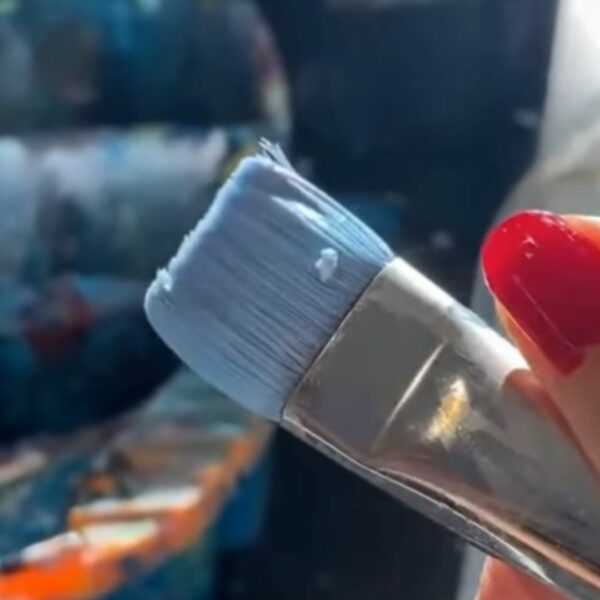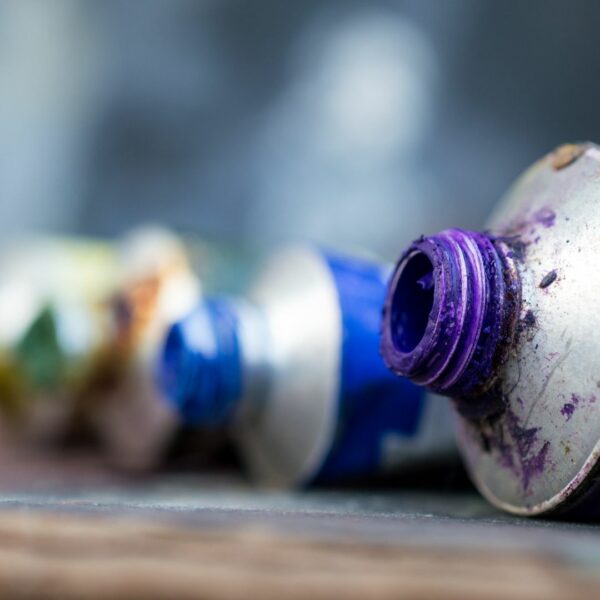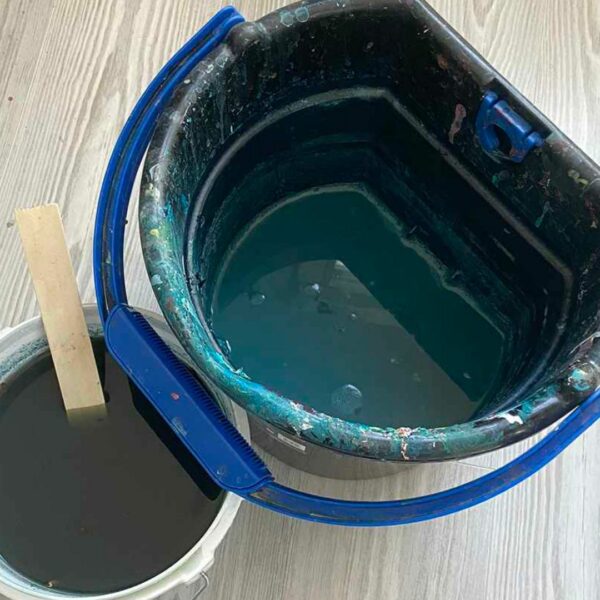Check out why throwing paint water down the drain is a big no-no and how it impacts the environment.
In this video I want to share a super important topic that is often overlooked in art: how to safely dispose of acrylic paint wastewater. I’m excited to share two of my favorite, tried-and-true solutions with you.
For a long time, I made the big mistake of simply tossing my acrylic paint wastewater down the drain (don’t do this!). Acrylic paint is basically liquid plastic, and dumping it is bad news for your plumbing, water supply, and the environment. Once I realized what a no-no this was, I made a commitment to being more eco-conscious and started looking at ways to be friendlier to the environment as an artist.
First, if you’ve seen my studio, you’d notice a three-gallon paint bucket always sitting by my sink. This bucket is where I dump all my used acrylic paint water. Once that bucket starts to fill up, I transfer the contents to a larger five-gallon bucket kept outside which is filled with about five inches of playground sand. The trick? Let Mother Nature do her thing! The sun and environment naturally evaporate the water, leaving behind dried paint solids mixed with sand, which I can then safely toss in the trash.
This method works like a charm, but it does come with downsides—like the occasional smell and slower evaporation, especially if it’s raining. Depending on humidity levels, how much rain you get, if you don’t have an outside space to leave a bucket, this may not be the ideal solution for you.
The second solution is a product I am simply amazed by —Golden’s Crash Paint Solids Kit. This kit makes disposing of acrylic paint wastewater a breeze. You get everything you need to process up to 16 gallons of paint water. Following their instructions, you fill a one-gallon bucket with your paint water. Then you add 1oz each of two different formulas from the kit (one at a time, with stirring and waiting in between), let it sit for an hour, and then strain through a special setup with coffee filters. You’re left with clear water that you can safely pour down the drain, while the leftover paint solids in the filter can be simply thrown in the trash.
This method is quicker but is pricier at a cost of about $4 per gallon.
Whether you’ve got the space and patience for the first method or prefer the efficient power of the second, you’re covered. Remember, every eco-friendly step makes a difference. Let’s make our creative process not just beautiful, but also responsible.
Got any other eco-conscious practices that you use in your art? Drop them in the comments for me!
Supplies:
Golden’s Crash Paint Solids Kit
Subscribe to my YouTube and get notified every time I go live for my Tune in Tuesday art demos!





